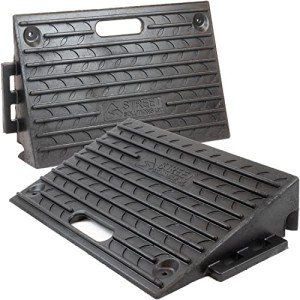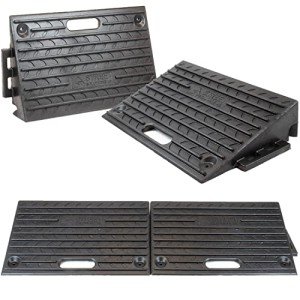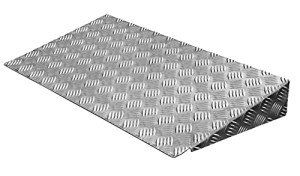The Importance of 4cm Bridge Ramps for Wheelchairs and Scooters
Accessibility is a significant concern in modern society, where inclusivity ensures that everyone, regardless of their mobility status, can navigate through their environment safely and comfortably. The use of ramps for wheelchairs and scooters has become an essential topic of discussion for cities, businesses, and public spaces looking to provide universal access. Among the various designs and heights of ramps available, 4cm bridge ramps stand out as a practical solution for easing movement over obstacles. This guide explores the importance, benefits, and practical considerations of adopting 4cm bridge ramps for individuals using mobility devices.
Understanding 4cm Bridge Ramps
A 4cm bridge ramp is specifically designed to provide a gentle slope for individuals using wheelchairs and scooters, enabling them to traverse thresholds, curbs, or small obstacles. The design ensures that these ramps are not too steep, thus preventing strain on the user and ensuring safety during traversal. While the 4cm height might seem minimal, it can significantly hinder mobility for those using wheelchairs or scooters if not properly addressed.
Typically made from durable materials such as rubber, aluminum, or plastic, 4cm bridge ramps offer stability, traction, and support for a wide variety of mobility devices. They can be utilized in various settings, including homes, public transport stations, businesses, and recreational areas.
Why Choose a 4cm Bridge Ramp?
-
Enhanced Accessibility: These ramps facilitate access to places that may otherwise be challenging for individuals with mobility issues. By allowing easier entry to buildings, parks, and events, they promote inclusion.
-
Safety and Comfort: A smooth, gentle slope decreases the risk of falls or accidents that can occur when trying to navigate a steep incline. For users who may have limited upper body strength, the construction of a 4cm bridge ramp can provide a secure and stable path.
-
Convenience: 4cm bridge ramps are lightweight and generally portable, making them easy to install and move as needed. Additionally, they can fit into various locations without requiring significant alterations to the existing infrastructure.
-
Cost-Effective Solutions: Compared to more extensive accessibility installations, 4cm bridge ramps provide an economical solution to meet access needs without extensive construction.
-
Compliance with Standards: Many areas have specific accessibility regulations that require businesses and public spaces to remove barriers for disability access. Installing 4cm bridge ramps can help meet these legal requirements while demonstrating a commitment to social responsibility and inclusivity.
Installation Considerations
When considering the installation of a 4cm bridge ramp, several factors should be taken into account to ensure it meets the needs of users:
-
Location Assessment: Analyze the locations where ramps will be required. Is the surface even? Are there any obstacles in the vicinity that might impede the use of the ramp?
-
Weight Capacity: Confirm that the ramp can support the weight of both the mobility device and the user. Most ramps will have weight specifications; choosing one that exceeds anticipated usage is advisable.
-
Material Selection: Various materials offer different benefits; rubber can provide better grip, while aluminum may be more durable. Choose based on the intended environment and expected frequency of use.
-
Slope Ratio: Although 4cm is a specific height, it's essential to consider the appropriate slope leading up to the ramp. The Americans with Disabilities Act (ADA) recommends a slope ratio of 1:12 for wheelchair ramps, meaning for every inch of height, there should be 12 inches (1 foot) of ramp run for safety.
-
Weather Resistance: If the ramp is placed outdoors, ensure it’s constructed from weather-resistant materials to withstand environmental conditions over time.
FAQs about 4cm Bridge Ramps
1. Are 4cm bridge ramps suitable only for wheelchairs?
No, 4cm bridge ramps are designed to accommodate both wheelchairs and mobility scooters, allowing for easy navigation across slight height differences.
2. Can I use a 4cm bridge ramp on stairs?
4cm bridge ramps should not be used on stairs as they are not suitable for inclined surfaces. They are specifically designed for small obstacles like curbs or thresholds.
3. Do I need permission to install ramps in public areas?
Yes, installing ramps on public property typically requires permission from local authorities to ensure compliance with safety regulations and standards.
4. How do I maintain a 4cm bridge ramp?
Regular cleaning and inspection for any signs of wear or damage will help maintain the ramp's functionality. Ensure that surfaces remain non-slip and that any attachments to the ground are secure.
5. Are there portable options available?
Yes, many manufacturers offer portable 4cm bridge ramps that can easily be folded or transported, making them ideal for temporary use or different locations.
Incorporating 4cm bridge ramps into public and private spaces is vital for enhancing mobility for individuals with disabilities. These ramps not only provide a practical design for traversing small elevation changes, but they also contribute significantly to creating an inclusive society. With their emphasis on safety, comfort, and accessibility, adopting 4cm bridge ramps is a responsible and necessary step toward ensuring that all individuals can navigate their environment with confidence and ease. As society continues to evolve and recognize the importance of inclusivity, bridge ramps will remain a key component in making mobility accessible for everyone.







